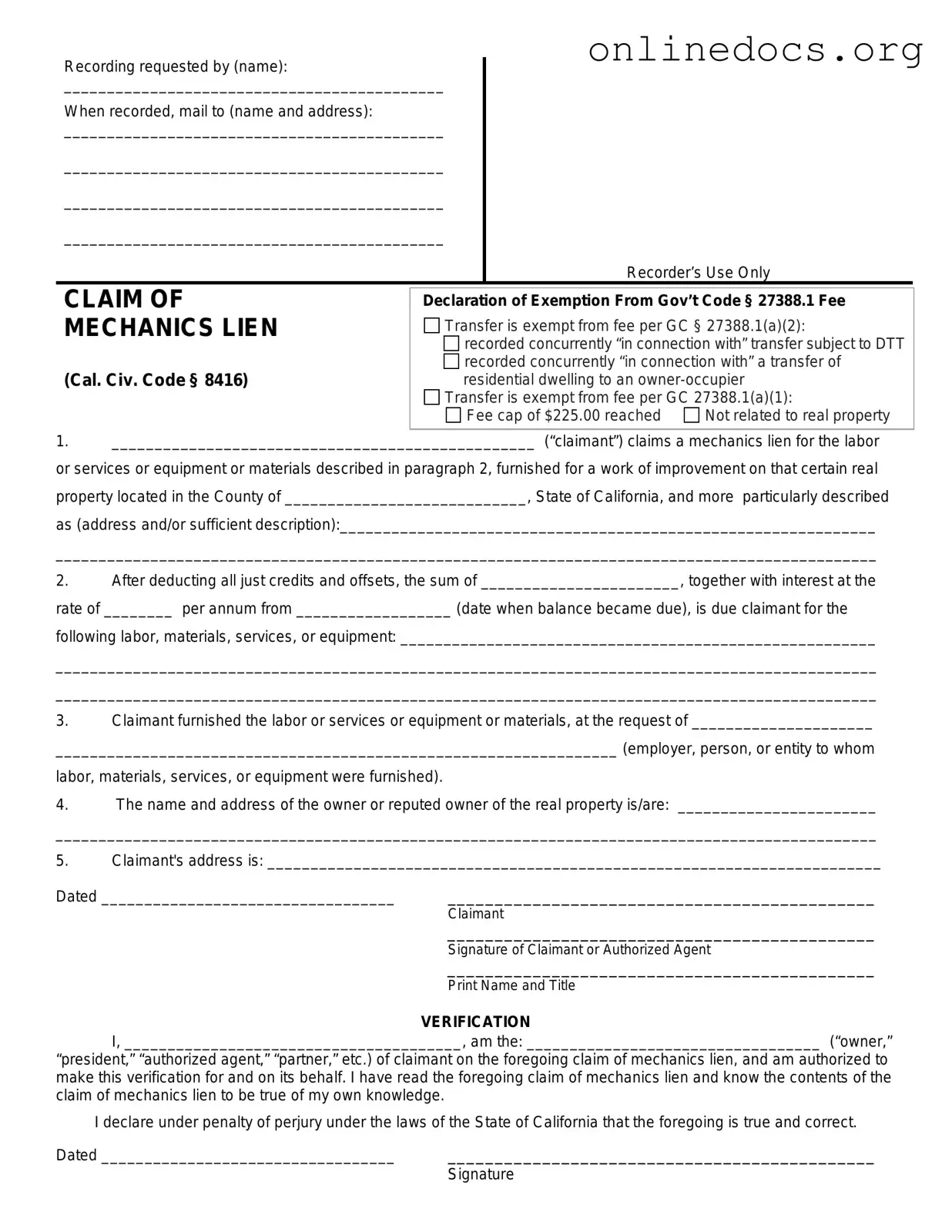The Mechanics Lien California form shares similarities with the Notice of Intent to Lien. Both documents serve as formal notifications to property owners that a contractor or supplier intends to file a lien for unpaid work or materials. The Notice of Intent to Lien is often sent before the actual lien is filed, giving the property owner a chance to resolve the issue and avoid further legal action.
Another document akin to the Mechanics Lien is the Preliminary Notice. This notice is typically sent at the beginning of a project to inform property owners and other parties of a contractor's involvement. Like the Mechanics Lien, the Preliminary Notice helps establish the contractor's right to file a lien if payment issues arise later.
The Claim of Lien is also similar to the Mechanics Lien form. A Claim of Lien is the actual document filed to assert a lien against a property for unpaid work. It details the amount owed and describes the work performed, much like the Mechanics Lien, which serves the same purpose in California's legal framework.
The Release of Lien is another related document. After a payment is made, a contractor may file a Release of Lien to formally remove the lien from the property records. This document ensures that the property is free from claims, similar to how a Mechanics Lien asserts a claim for unpaid work.
The Stop Notice functions similarly to a Mechanics Lien in that it allows a contractor to secure payment directly from a property owner or a construction lender. This document is used to notify the owner or lender of the contractor's claim for payment, thus preventing the release of funds until the payment issue is resolved.
The Bond Claim is related as well. When a contractor or supplier cannot file a Mechanics Lien due to a public project, they may file a claim against a payment bond. This document serves as a financial guarantee that payment will be made, similar to how a Mechanics Lien secures a contractor's right to payment for services rendered.
The Affidavit of Service is another document that complements the Mechanics Lien. It is used to prove that a notice or lien has been properly served to the involved parties. This document is essential for validating the lien process, ensuring that all parties are aware of the claim, similar to the notification aspect of a Mechanics Lien.
The Notice of Completion is also relevant. Once a construction project is completed, a property owner may file this notice. It serves to inform potential lien claimants that the project has ended, which can affect the timeline for filing a Mechanics Lien. Both documents are crucial for understanding the project status and related claims.
In the complex landscape of property law, understanding various legal documents like the Mechanics Lien and the operation of a Power of Attorney can be crucial for both parties engaged in construction and financial dealings. The California Power of Attorney form allows individuals to delegate authority effectively, ensuring that decisions can still be made on their behalf even when they are unable to act, as detailed at https://fillpdf-forms.com. By grasping these concepts, stakeholders can navigate their responsibilities with greater confidence and awareness.
The Waiver of Lien is another document that is similar. This waiver is often signed by contractors or suppliers to relinquish their right to file a lien in exchange for payment. While the Mechanics Lien asserts a claim, the Waiver of Lien indicates that the claim has been satisfied.
Finally, the Certificate of Satisfaction is akin to the Mechanics Lien as it confirms that a lien has been paid and satisfied. Filing this document removes the lien from the property records, similar to how a Release of Lien operates, ensuring that the property is clear of any claims.
